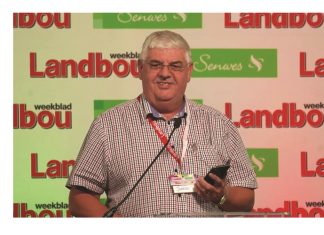Transnet Port Terminals (TPT) East London announced on Tuesday 28 February that the Port of East London’s grain elevator had been relaunched and was once again open for business.
The elevator – one of the largest silo’s in the country, with a total storage capacity of 66 000 tons – has been out of commission for the past two years due to a severe decline in volumes regionally. East London grain volumes declined from a previous high of 1 000 000 tons per annum to 48 000 tons per annum in 2021.
According to Dr André van der Vyver, CEO of the South African Cereals and Oilseeds Trade Association (SACOTA), the opening of the grain elevator will have a huge impact on grain exports. ‘With maize and soybean production growing and surpluses accumulating over the past two years, supply routes to Durban congested and the Durban bulk grain terminals fully booked, grain exporters are looking for other opportunities.’
‘The collaboration between the East London Terminal, local and regional stakeholders as well as industry is unprecedented and has unlocked further economic opportunities for the Eastern Cape,’ said Naliya Stamper, East London terminal manager. She added that the East London Terminal formed part of a network of 16 sea cargo terminals managed by TPT. The entity has identified East London as one of two major facilities as part of a strategy to export and import grain volumes countrywide.
According to Dr Van der Vyver, the Port of East London is ideally positioned to accommodate some of the surplus production coming out of the Free State and areas further west as well as servicing the local grain market. However, he added that it faced several longer-term challenges to be fully competitive in relation to other ports, specifically Durban and Maputo, on a sustainable basis. These challenges included quayside depth, port equipment, and the supply and receipt of product, all items requiring new investment. ‘South Africa is in need of another deep-sea bulk grain export port. East London may hold this potential and, in the process, unlock the economic potential of the Eastern Cape,’ he said.
All on board
SACOTA and its members initiated the first round of discussions with TPT East London at the end of 2021. Eager for new business, the Port of East London jumped at the opportunity and, under the auspices of SACOTA, stakeholders including its exporting members and a TPT East London team of technical experts, met every three weeks to plan the way forward. ‘A detailed product process flow was compiled to ensure that the terminal would be able to take receipt of the maximum tons per day, and load the vessels optimally,’ explained Dr Van der Vyver.
Following these initiatives, the port reopened for maize exports for the first time in ten years with the first vessel loading maize in June 2022. ‘Unfortunately, due to the many challenges with this first shipment, there were no further bookings. Credit, however, has to go to Naliya Stamper and her team who since then secured two bookings this year, enabling the elevator to be relaunched.’
Dr Van der Vyver said the future looked promising, and the grain industry seemed set to benefit from the latest developments. ‘Each vessel exported through East London generates, in maize income alone, the equivalent of approximately R200 million in foreign exchange as well as an injection into the local economy. The solution lies in the ability to produce more and to export competitively. If this can be achieved, there will be many spin-offs for the economy and the rural areas in the form of job creation, additional investments and food security, to mention but a few,” he added.


















